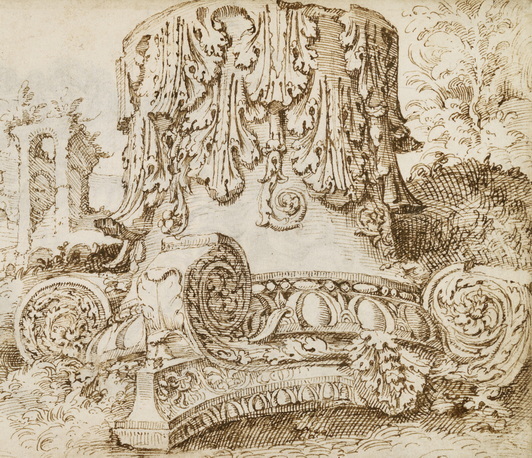Faszination Rom. Maarten van Heemskerck zeichnet die Stadt | The Allure of Rome. Maarten van Heemskerck Draws the City
Exhibition
- Venue: Kulturforum, Berlin
- Inizio: 26.04.2024
- Fine: 04.08.2024
- Relatore: An exhibition of the Kupferstichkabinett – Staatliche Museen zu Berlin in cooperation with the Bibliotheca Hertziana – Max-Planck-Institut for Art History
- Contatto: sanchez@biblhertz.it

These include wide panoramas and city views as well as studies of ancient ruins and sculptures. In this way, he compiled an extensive stock of motifs from which he was to draw throughout his life. After his death, the drawings were passed on, first to artists and later to collectors. Individual sheets were sold on, the majority were probably pasted into two albums in the 18th century – together with other drawings by other artists. Thus the core of Van Heemskerck's Roman drawings remained together until today, a unique case in art history. In 1886 and 1892, the two albums entered the holdings of the Berlin Kupferstichkabinett; since then, they have never been exhibited in their entirety.
Reassembled Drawing Book
For conservation reasons, the binding of the so-called first Roman album, which was renewed in the 1980s, had to be opened, so that 66 sketchbook pages with their 130 drawn recto and verso pages can now be shown in public for the first time. In preparation for the exhibition, extensive examinations of the inks and papers are taking place, making it possible to reconstruct the original sequence of the pages even more precisely than before, to better understand the drawing processes, and to trace the later use of the drawings. A reconstruction of the drawing book as a digital copy and facsimile gives an impression of the original ensemble. The second album, containing only twenty sheets by Van Heemskerck, is exhibited in bound form and pages will regularly be turned over.
Sketches, Drawings, Paintings, Engravings and Plaster Casts
Numerous loans from various collections of the Stiftung Preußischer Kulturbesitz, but also from important museums such as the Rijksmuseum in Amsterdam, the Princely Collections of Liechtenstein, the National Gallery in Prague, the Dresden State Art Collections, the Hamburg Kunsthalle, and the Bibliotheca Hertziana enrich the exhibition. The Berlin sheets are complemented by further drawings and paintings from Van Heemskerck’s Roman period, as well as plaster casts of sculptures that Van Heemskerck studied, and contextualized by series of engravings that were created after his return to Holland and take up motifs from his journey to Rome. Prints in particular contributed to the rapid dissemination of the iconic motifs throughout Europe. They were to shape visual memory for centuries.
Curators
The exhibition is curated by Christien Melzer (Kupferstichkabinett, Staatliche Museen zu Berlin), Tatjana Bartsch (Bibliotheca Hertziana, Max Planck Institute for Art History, Rome), and Hans-Ulrich Kessler (Skulpturensammlung und Museum für Byzantinische Kunst, Staatliche Museen zu Berlin).
Exhibition Catalogue
The exhibition will be accompanied by a catalogue of approx. 350 pages and a facsimile of the Roman drawing book.
Event Program
The exhibition will be accompanied by an extensive program of lectures, exhibition tours, discussions, workshops and drawing activities.
Please visit for more information: https://www.smb.museum/en/exhibitions/detail/the-allure-of-rome
Caption: Maarten van Heemskerck, Composite Capital and Colosseum, detail, c. 1532–1536, preliminary drawing in lead pencil pen and brown ink © Staatliche Museen zu Berlin, Kupferstichkabinett / Dietmar Katz